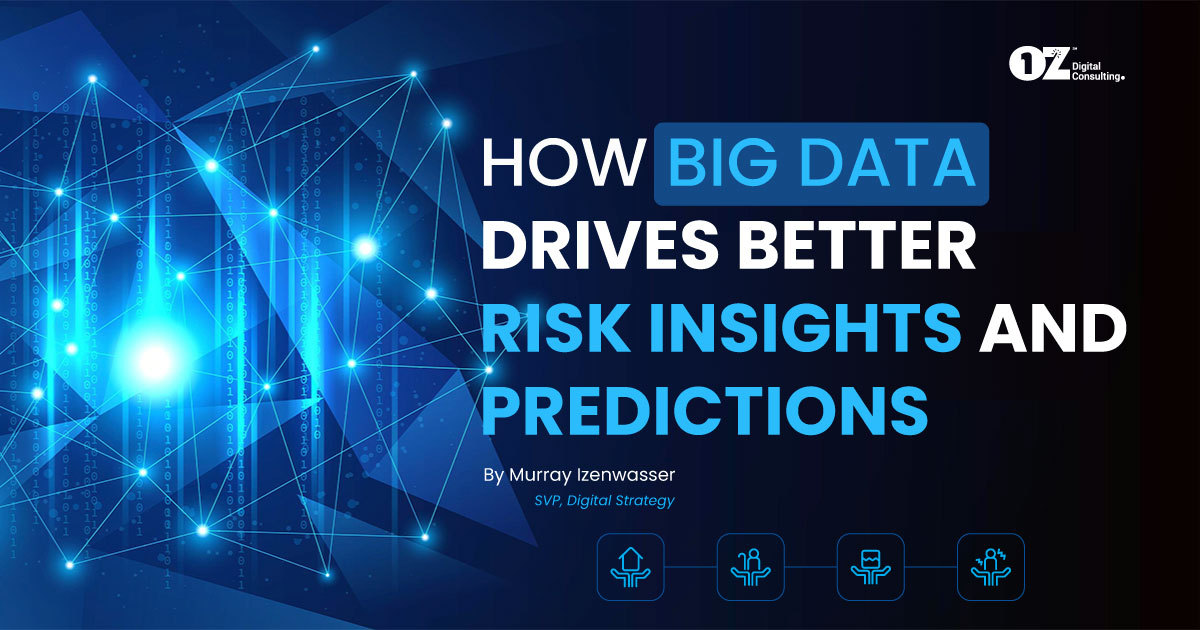By Murray Izenwasser
The insurance industry is no stranger to data. Insurers need all the customer data they can get — structured data on a policy form, past behavior of policy renewals or terminations, and publicly available government data such as criminal records, bankruptcies, and foreclosures.
While insurers have access to mountains of data — everything from disaster models to historic perils, real-time weather feeds, and current policy information — they don’t have an effective way to integrate all these disparate data sources into one comprehensive view. Until we get there, we won’t have the deep insights we need to prevent risk or develop new products.
The faster we move as an industry to digitize that data, automate underwriting, and integrate third-party data, the more quickly we can create new underwriting and portfolio risk management techniques.
However, the silver lining is that some insurers are already integrating big data and analytics into their operations, from creating early-warning systems to gathering insights that prevent incidents to simplifying and accelerating claims processing.
Here’s how you can reduce friction throughout the customer journey — from requests for coverage to claims — while mitigating risk and cutting costs.
Risk-Based Pricing Innovation and Transformation
Even without face-to-face customer interactions, you can build accurate customer profiles by aggregating data from various sources — and scoring this based on demographics, social media, and public-facing data — to create more personalized products and risk-based pricing.
We’re seeing this play out in the auto insurance industry, which traditionally is highly competitive and price sensitive. Customers are known to switch insurers on price, which impacts growth and profitability.
However, with the help of customer data — structured and unstructured (reviews and ratings, blogs, social media, and auto forums) — you can better understand the customer, make correlations, categorize the risk status of different models, and set premiums accordingly.
Armed with these insights, you can:
- Accurately assess each unit’s risk within an insured pool by micro-segmenting risk pools.
- Price dynamically based on changing risk profiles — all enabled by granular behavioral data and advanced modeling.
- Offer competitive and differential pricing while improving premiums and demanding higher premiums for riskier products.
For example, in Spain, Zurich Insurance launched Klinc, the innovative, on-demand insurance solution that lets users of web and mobile applications buy cover whenever (and wherever) they need it.
In the future, we’ll see more cross-industry platforms and seamless insurance portability that integrate risks and exposures and covers for an insured under a universal insurance policy.
Point-Based Risk Scoring
The greatest challenge for commercial insurers is collecting data — policy in-force and industry-wide peril data — from disparate sources. Risk analysts constantly need context to make critical business decisions.
Enter location intelligence.
Location intelligence is the lens through which analysts, underwriters, and actuaries can view complex data, uncover opportunities, and identify hidden risks. Because of the spatial connection between policies and perils, location intelligence helps analysts extract and share actionable insights throughout their organizations.
By leveraging location, carriers can integrate data from policy databases, spreadsheets, and third-party vendors to get a better view of their portfolios.
This geographic view of the data provides:
- An intuitive platform for identifying clusters of policies in effect.
- Concentrations of insured value.
- Metrics on previous claims.
With deeper contextual insights into potential perils, analysts can determine the exposure of an individual policy to perils on a hyperlocal level.
Location intelligence has transformed actuarial science paving the way for point-based risk scoring, the underwriting method that examines a policy’s relative exposure to the perils that may occur.
Point-based risk scoring is a drastic shift from the traditional method, where rates are determined based on whether a policy existed within a risk zone.
There have been instances where flooding and fires have occurred outside traditional risk zones, such as Hurricane Harvey and the Fort McMurray wildfire. But it’s still a more effective risk-scoring method that accounts for perils that could occur but have yet to happen.
Take, for example, a car owner who lives on a corner lot flanked by a busy road on one side and a quiet street on the other. The risk associated with this location would come down to which direction the driveway faces and insurers would then adjust for it.
Trusted data with location context allows carriers to price accordingly, mitigate risk exposure, and improve reinsurance rates.
Intelligent Risk Assessment
Commercial risk assessment is data intensive. A fixed data set is traditionally used to perform a risk assessment, which can be limiting. But when you integrate real-time data from external sources — more granular and up-to-date than you would typically find — you get the complete picture including:
- The likelihood of everyday perils at the property location
- The existence of high-risk items nearby
- The density of existing policies near the property
It helps you better assess the property submission before the policy is accepted.
Individual risk assessment results in special pricing of the premium cover required to cover the risks inherent to the particular property.
For insurers, it means identifying areas of reduced exposure, better risk management, and lower costs. For policyholders, it means better prices, as insurers will have a way to identify regions where they can offer more attractive terms and reward good customers with greater pricing accuracy.
By integrating critical risk-assessment data with historical results, you can quickly identify anomalies in likelihood and impact ratings and assess the geography and product or business lines driving such changes.
If you’d like to learn more about how you can achieve success through insurance data analytics transformation, get in touch with our experts. No matter where you are on your digital transformation journey, we will help you meet your customers where they are and grow your business.



